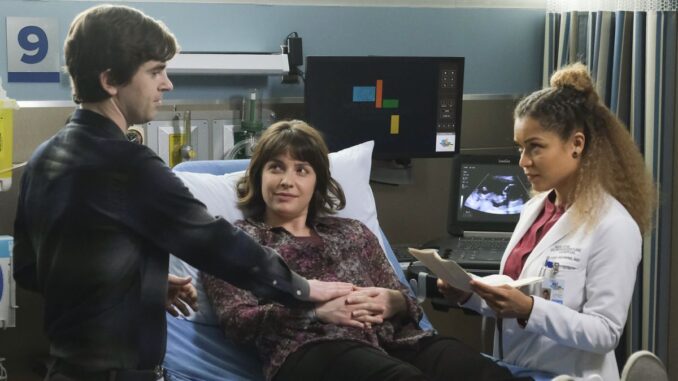
In the vast landscape of television romance, very few stories manage to stand out from the crowd. But the relationship between Shaun Murphy and Lea Dilallo in “The Good Doctor” is anything but conventional, and that’s what makes it so compelling. It’s not built on tropes or cliché gestures. It’s raw, imperfect, and deeply human—redefining what love looks like when emotional vulnerability and neurodiversity are at its core.
From the beginning, Shaun and Lea’s connection was unusual. As roommates, they forged a bond over late-night conversations, car repairs, and unexpected emotional exchanges. Shaun’s literal, sometimes awkward demeanor clashed with Lea’s impulsive, heart-on-sleeve personality. But rather than driving them apart, those differences created a foundation of mutual curiosity and respect. Viewers quickly saw the potential in their relationship: not because they were perfect together, but because they were willing to understand each other.
Shaun, being on the autism spectrum, faced real challenges with physical touch, emotional expression, and interpreting social cues. Romantic relationships didn’t come naturally to him. He struggled with what it meant to love someone—how to show it, say it, and even feel it. Lea, on the other hand, had to learn how to communicate with someone who processes the world differently. That required patience, empathy, and a lot of honest conversations.
What made their love story so revolutionary was the way it unfolded without forcing Shaun to change who he was. So often, TV romances involving neurodivergent characters revolve around them learning to behave “normally” to be accepted. But not here. Instead, we see Lea stepping into Shaun’s world, and Shaun expanding his comfort zone at his own pace. Their story is one of two people growing together without erasing themselves.
In Season 4, their relationship reached a pivotal point when they faced an unexpected pregnancy. For many couples, this would be a moment of joy, but for Shaun and Lea, it brought a cascade of anxiety, doubt, and ultimately heartbreak. When Lea suffered a miscarriage, the pain was unbearable. And yet, in those vulnerable moments, we saw the true strength of their bond. Shaun, despite his struggle to express emotions, held her hand, stood by her side, and offered his unwavering presence. Lea, in turn, let herself grieve openly while recognizing Shaun’s silent strength.

The show didn’t romanticize their grief. It didn’t tie it up in a neat bow. Instead, it gave viewers a heartbreaking but honest look at how loss tests even the strongest relationships—and how love can survive when people are willing to walk through pain together.
Of course, the road was never smooth. Lea at times questioned whether she could truly be in a long-term relationship with Shaun, and Shaun questioned whether he could meet her emotional needs. These doubts, explored in Season 5, were painful but necessary. They highlighted the importance of communication and self-awareness in any relationship. But what made their story resonate was their mutual willingness to fight—not with each other, but for each other.
One of the most moving moments came when Shaun, after months of soul-searching, decided to propose. It wasn’t a grand, cinematic gesture. It was intimate, simple, and entirely Shaun: straightforward and full of heart. His proposal wasn’t about fireworks or spectacle. It was about clarity. It was about saying, “I choose you,” in the most honest way he knew how.
Their wedding in Season 6 was equally heartfelt. There were no over-the-top declarations, just two people standing together, promising to accept and support one another, exactly as they are. The ceremony reflected the essence of their relationship: real, raw, and filled with quiet strength. It was a culmination of everything they had been through and a declaration that love doesn’t have to be flashy to be powerful.
More than anything, Shaun and Lea’s relationship breaks down barriers. It proves that people on the autism spectrum can love deeply and be loved in return—not despite who they are, but because of who they are. It shows viewers that relationships don’t have to look like a Hollywood movie to be meaningful. They just have to be honest.
The representation matters. For people living with autism, for their partners, for families, and for anyone who’s ever struggled to connect with others, Shaun and Lea’s story is a beacon. It doesn’t paint a picture of perfection. It paints a picture of effort, understanding, forgiveness, and hope. And in doing so, it encourages audiences to rethink their own ideas of love and commitment.
In the ever-evolving storyline of “The Good Doctor,” their romance remains one of its most grounded, affecting arcs. It teaches us that love isn’t always easy—but it is always worth it when it’s built on trust, truth, and the courage to grow. Shaun and Lea have shown us that being different is not a barrier to love—it can be its very foundation.
